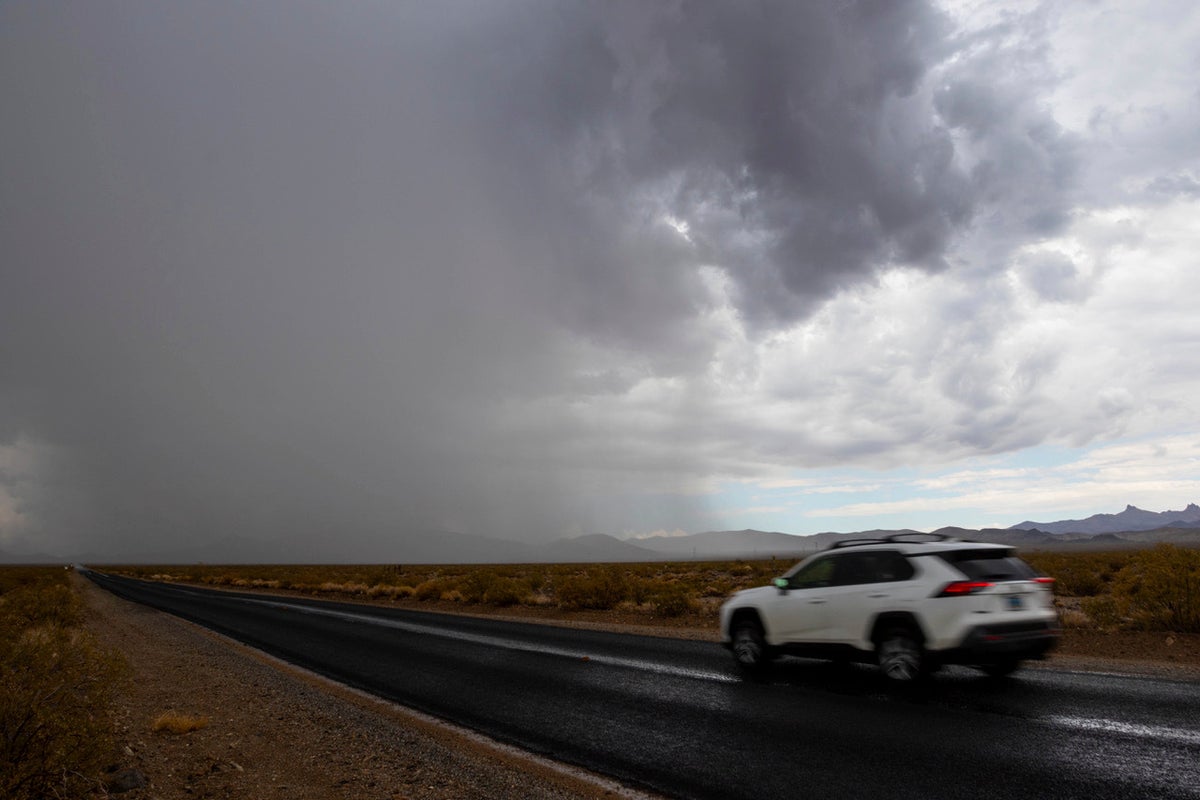
Firefighters aided by afternoon rain fought to contain a massive blaze that swept through the California desert into Nevada and could threaten the region's famous spiky Joshua trees.
The York Fire that erupted last Friday was California's largest wildfire this year. As of Tuesday night it had burned through more than 125 square miles (323.7 square kilometers) of land but showed little growth during the day and was 23% contained, fire officials said.
Humid monsoonal weather conditions brought brief but heavy rain, especially on the south end of the fire, and kept its spread to a minimum, fire officials said.
However, the 400 or so firefighters battling the blaze had to balance their efforts with concerns about disrupting the fragile ecosystem in California's Mojave National Preserve,
Crews used a “light hand on the land,” clearing and carving fire lines without the use of bulldozers in order to reduce the impact in the ecologically-sensitive region, which is home to some 200 rare plants.
“You bring a bunch of bulldozers in there, you may or may not stop the fire, but you’ll put a scar on the landscape that’ll last generations,” said Tim Chavez, an assistant chief for the California Department of Forestry and Fire Protection.
The blaze erupted near the remote Caruthers Canyon area of the vast wildland preserve, crossed the state line into Nevada on Sunday and sent smoke further east into the Las Vegas Valley.
The fire started on private lands within the preserve, but the cause remains under investigation. Less than 3% of the land in the 2,500-square mile (6,475-square kilometer) preserve is privately owned.
While it’s one of the largest national park units outside of Alaska and Hawaii, the vast majority of the Mojave National Preserve’s 880,000 visitors last year were just passing through on their way between Southern California and Las Vegas.
The territory is a varied desert landscape — mountains and canyons, sand dunes and mesas, Joshua tree forests and volcanic cinder cones — and features about 10,000 threatened desert tortoise within its boundaries.
Some of the preserve’s plants can take centuries to recover from destruction. It could take the pinyon-juniper woodlands alone roughly 200 to 300 years to return, while the blackbrush scrub and Joshua trees — which grow only in the Mojave Desert — are unlikely to regrow after this catastrophic blaze, said Ileene Anderson, a senior scientist at the Center for Biological Diversity.
The 2020 Dome Fire in a different part of the national preserve destroyed an estimated 1 million Joshua trees.
But fire itself isn’t the only worry. On federal lands, with few people and little property at risk from flames, firefighters sometimes forgo certain equipment like bulldozers, chainsaws and aircraft.
“You don’t disturb any more soil than you absolutely have to; you don’t cut trees unless they absolutely have to come down,” said Chavez, speaking about the tactics in general.
When there are ecological and cultural sensitivities at stake, firefighters negotiate with federal officials to determine what equipment can and cannot be used.
“It’s not just going out there and throwing everything we’ve got at it,” Chavez said.
In Nevada, the fire has entered the state’s newest national monument, Avi Kwa Ame, said Lee Beyer, a spokesperson for the U.S. Forest Service. But Beyer said the number of acres burned within the boundaries of the vast monument in southern Nevada wasn’t yet known.
President Joe Biden established the monument in March, permanently protecting the desert mountain region considered sacred by some tribes. The area stretches more than 500,000 acres (202,300 hectares) and includes Spirit Mountain, a peak northwest of Laughlin called Avi Kwa Ame (ah-VEE’ kwa-meh) by the Fort Mojave Tribe and listed on the National Register of Historic Places.
__
Dazio reported from Los Angeles, and Yamat reported from Las Vegas.







